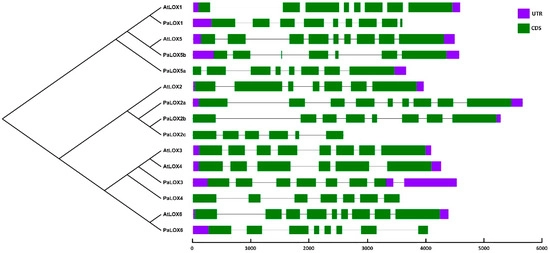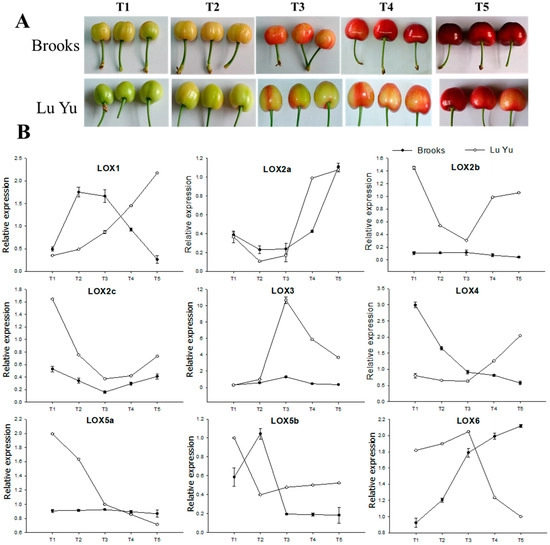Each fruit carries its own unique aroma, and sweet cherries are no exception. These aromatic profiles are shaped by a variety of volatile compounds, and in the case of sweet cherries, over 60 of such compounds have been identified.
These include aldehydes, alcohols, terpenes, lipids, and ketones, each contributing to the characteristic fragrance of the fruit. Among the most prominent are the C6 aldehydes and alcohols, such as hexanal, which together account for over 50% of the volatile content of sweet cherries.
These compounds are primarily responsible for the "green" aroma that is so typical of this fruit. The C6 aldehydes and alcohols in sweet cherries are produced through the fatty acid metabolic pathway, which plays a central role in the formation of the fruit’s aromatic compounds.
Formation of aromatic compounds
At the core of this process is lipoxygenase (LOX), an enzyme that catalyzes the oxidation of unsaturated fatty acids like linolenic and linoleic acids. The enzyme generates hydroperoxides, which are then transformed into aldehydes and alcohols. This series of reactions is crucial for the synthesis of aromatic compounds.
Moreover, lipoxygenase is an enzyme found widely in many plants, and its role goes far beyond aroma production. It also influences a variety of physiological functions in plants, including seed germination, root development, tuber growth, and even plant defense mechanisms against pests and diseases.
Additionally, lipoxygenase is involved in the maturation of pollen, leaves, fruits, and the senescence process, highlighting its fundamental role in plant life. The family of enzymes belonging to lipoxygenase has long been a focus of scientific research due to its involvement in numerous aspects of plant physiology.
Scientific research and gene analysis
In this study, researchers from the Shandong Institute of Pomology, the Tai'an Forest Protection and Development Center, and the National Technological Innovation Center in China closely examined the lipoxygenase gene family in sweet cherries using bioinformatics tools.
By analyzing the cherry genome, they identified nine distinct LOX gene sequences. These genes were mapped to chromosomes 1, 2, 3, 4, 6, and 8, and the team conducted homology alignment and functional domain analysis of the encoded proteins.
 Figure 1. Phylogenetic tree of the amino acid sequences of LOX in sweet cherry and Arabidopsis. The purple and green blocks represent the untranslated region (UTR) and coding sequence (CDS) regions, respectively, and the introns are represented by black lines.
Figure 1. Phylogenetic tree of the amino acid sequences of LOX in sweet cherry and Arabidopsis. The purple and green blocks represent the untranslated region (UTR) and coding sequence (CDS) regions, respectively, and the introns are represented by black lines.
The results revealed that these genes are primarily localized in the cytoplasm, chloroplasts, or plasma membrane of cells, and their expression follows specific patterns during fruit development.
Expression patterns and fruit development
One of the most interesting findings of the study is that the LOX gene family in sweet cherries exhibits five distinct expression patterns during the ripening process. Each gene shows a peak of expression at a particular stage of fruit development, collectively contributing to the growth and maturation of the fruit.
 Figure 2. Analysis of LOX gene expression pattern in different developmental stages of sweet cherries. (A) different development stages of sweet cherry fruit, (B) LOX gene expression pattern in different developmental stages of sweet cherries.
Figure 2. Analysis of LOX gene expression pattern in different developmental stages of sweet cherries. (A) different development stages of sweet cherry fruit, (B) LOX gene expression pattern in different developmental stages of sweet cherries.
As the fruit ripens, enzyme activity changes in response to these developmental signals. In particular, the study found significant differences in enzyme activity between early- and late-maturing cherry varieties, indicating that the timing and intensity of lipoxygenase activity are closely linked to the specific variety of cherry.
Furthermore, the volatile content in these varieties also differed, reflecting the unique aromatic profiles of each type. These results open the door to further exploration of how LOX enzymes influence the physiological and aromatic characteristics of sweet cherries, offering opportunities for applications in agriculture and food science.
Source: Fu, Q.; Xu, D.; Hou, S.; Gao, R.; Zhou, J.; Chen, C.; Zhu, S.; Wei, G.; Sun, Y. Comprehensive Identification and Expression Profiling of Lipoxygenase Genes in Sweet Cherry During Fruit Development. Horticulturae 2024, 10, 1361. https://doi.org/10.3390/horticulturae10121361
Source immages: Quanjuan Fu et al., 2024; SL Fruit Service
Melissa Venturi
University of Bologna (ITA)
Cherry Times - All rights reserved














